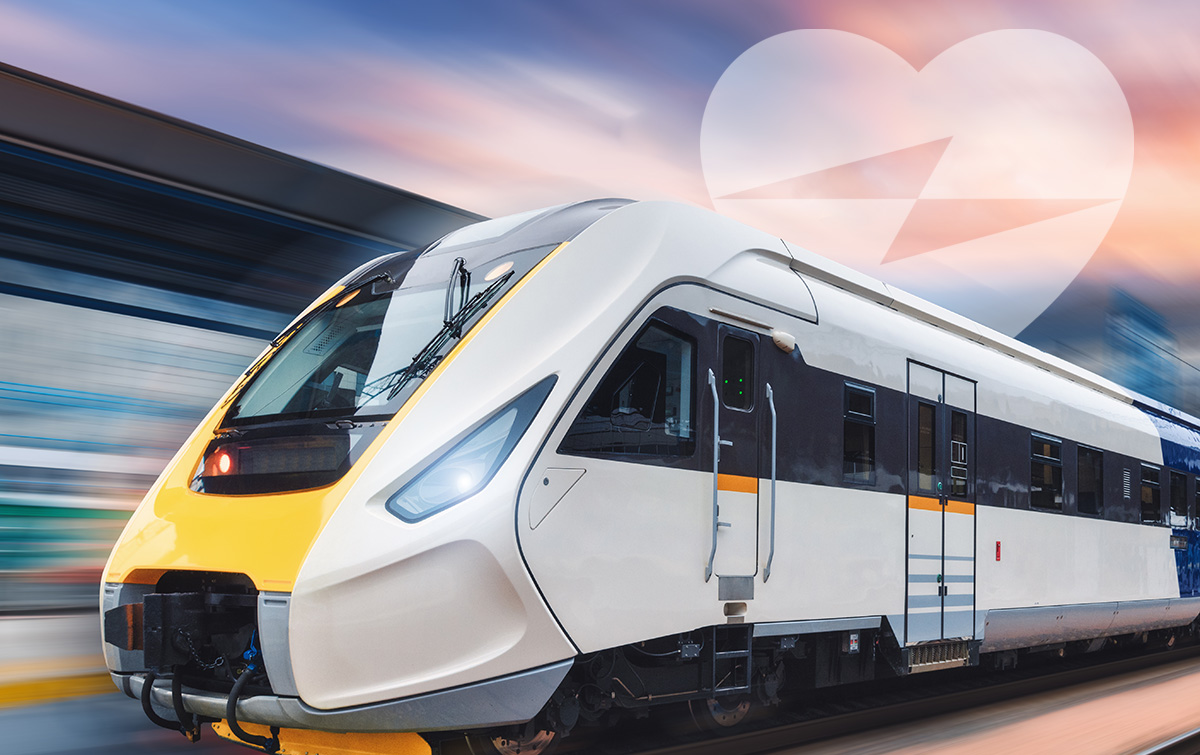News
Latest News
May 21, 2024

Each day millions of people use the train as a way to commute. In 2023, more than 28 million customers rode on Amtrak trains alone! Due to the high volume of commuters, and how often sudden cardiac arrest occurs, there is a chance a sudden cardiac arrest emergency may occur on a train.
No matter the location, it is crucial the chain of survival is put into action immediately.
The links to the chain of survival are:
Activation of Emergency Response
Early CPR
Rapid Defibrillation
Advanced Resuscitation by Emergency Medical Services
Post Cardiac Arrest Care
Recovery
The focus of lay rescuers is on the first three links before the ambulance shows up. Let’s take a look at how these first three links can be put into action on a train.
If sudden cardiac arrest is witnessed, you must first ensure it is safe for you to go help the person. Once you decide that it is, you need to take control, check for responsiveness, and check for breathing. You should call 9-1-1 yourself or have someone call 9-1-1 and put their phone on speaker mode, but also yell for a conductor or someone working on the train. They can then implement the emergency action plan for the train service. We also want to command someone to go get an AED if one is available on the train. It is important to note that not all trains are equipped with Automated External Defibrillators. When talking with the 9-1-1 dispatcher, make sure to tell them that you are on the train and answer all of their questions.
Immediate CPR is a crucial step in raising survival rates for sudden cardiac arrest. After you have assessed the scene and activated the emergency response system, CPR needs to be started. This can be done by providing “hands only CPR” if that is what you are most comfortable doing. If there are multiple people on the train comfortable performing CPR you can trade on and off with them to keep the compressions as effective as possible for as long as possible. You need to continue CPR until the AED arrives or until the train stops and emergency personnel arrives to take over.
The quicker an AED is used, the higher the chances are of survival. Unfortunately, all trains are equipped differently. Some trains may have an AED and others may not. If an AED is accessible on the train, you need to send someone to get it and use it as soon as it arrives. If there is not an AED on the train, you need to keep providing CPR until the train stops, hopefully at the next available stop, where emergency personnel will hopefully be waiting.
It is important for lay rescuers to remember, something needs to be done before EMS arrives. Do the best you can do in the situation you are in. If an AED is available on the train, provide CPR and use the AED as soon as possible. If there is not an AED available on the train, provide CPR and don’t stop until the train stops and emergency personnel comes on the train to take over.
To learn more about Defibtech and to join us on our quest to save lives from sudden cardiac arrest, visit www.Defibtech.com.
Sources:
https://media.amtrak.com/2023/11/amtrak-fiscal-year-2023-ridership-exceeds-expectations-as-demand-for-passenger-rail-soars/#:~:text=In%20FY23%2C%20more%20than%2028,pandemic%20levels%20since%20early%20summer.